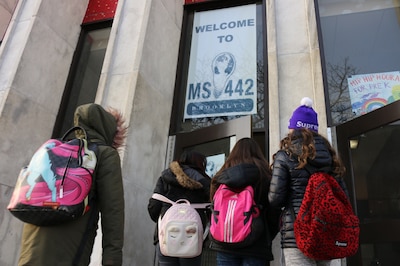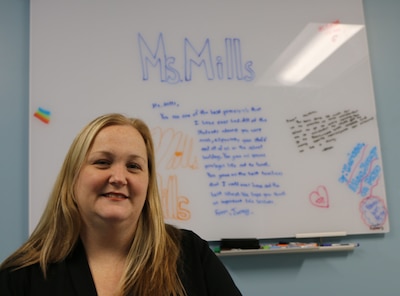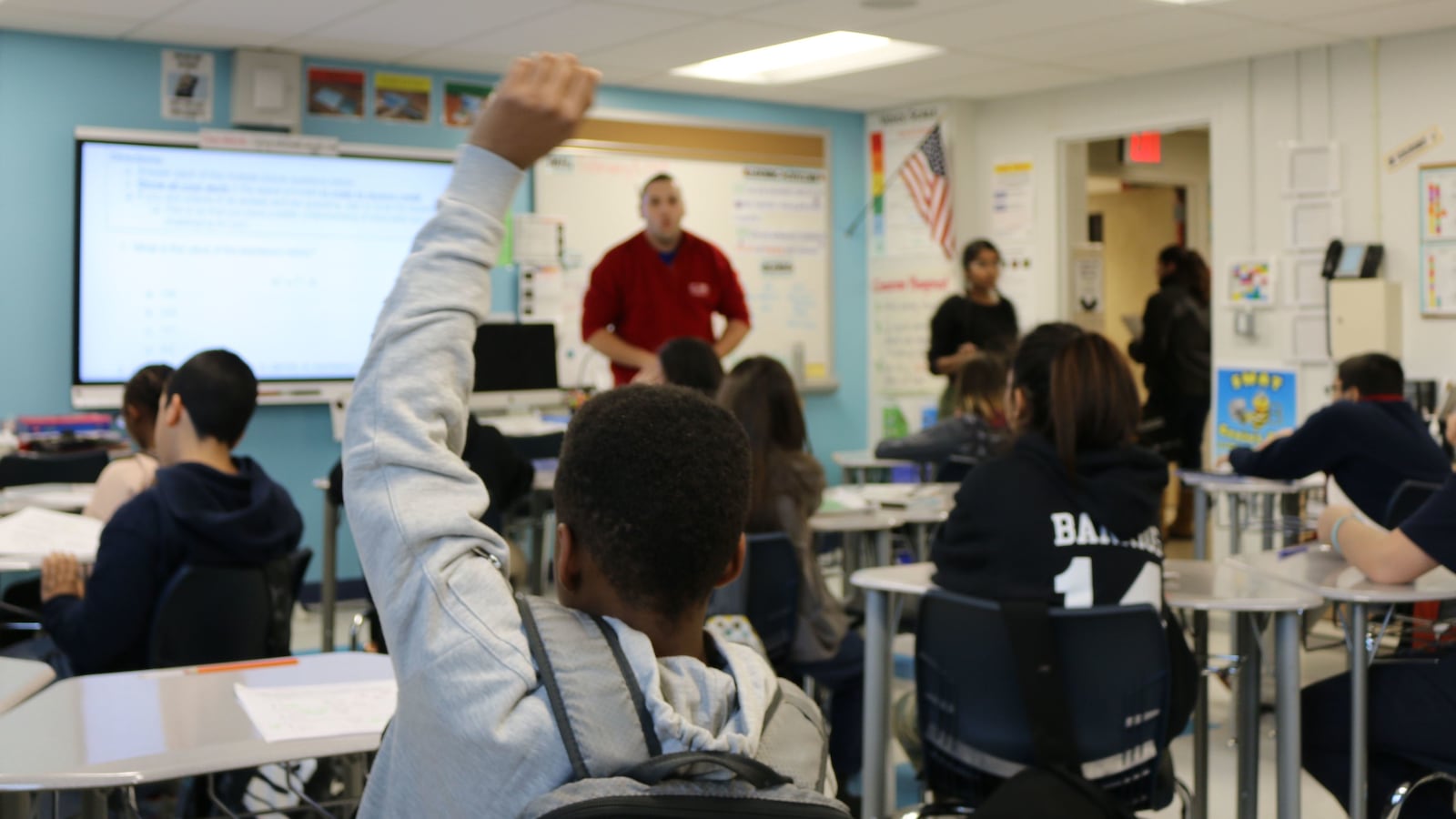For years, M.S. 442 Carroll Gardens School for Innovation served mostly low-income students. But with more well-off families picking the Brooklyn school than ever before, it is at a tipping point — and so is its budget.
Schools in Brooklyn must enroll at least 60 percent poor students to receive Title I money, a pot of federal funding that supports schools with many needy families. The recent influx of middle-class students has pushed M.S. 442 right below that threshold, to just under 59 percent last school year, likely leaving it with a budget hole of almost $120,000.
“We’ll have to dig deep,” said Principal Noreen Mills. “My main concern and goal is for my students to have all the opportunities we have now, when we do have Title I funding.”
Across New York City, parents, educators and students have led a grassroots effort to better integrate schools, which are among the most segregated in the country. But for all its academic and social benefits, greater socioeconomic diversity can create new problems for school budgets.
When high-poverty schools attract just enough middle-class families to fall below the Title I cut off, the federal funding spigot abruptly shuts off. While the city education department extends the funding for one year after schools cease to qualify, principals are soon left scrambling to plug the budget hole — even as they continue to serve a large share of low-income students who may need extra support.
“There’s no nuance in it,” said Jody Drezner Alperin, a parent at M.S. 442. “You either are, or aren’t,” a Title I school.

Those newly diverse schools may not yet have enough higher-income families who are able to raise or donate funds equivalent to the lost Title I money. But even if that’s possible, some principals hesitate to rely too heavily on parents’ checkbooks. They worry that doing so would devalue the contributions of families who can’t afford to donate, while giving affluent parents greater sway over school decision-making and programming.
“It throws it over to the middle class to be the financial saviors of the school,” said Julie Zuckerman, the principal of Castle Bridge School, a mixed-income school in Washington Heights that doesn’t yet qualify for Title I. “We want to have the resources to do right by all the kids.”
At M.S. 442, more than 74 percent of students qualified for free lunch just five years ago, the measure the city uses to decide whether a school will get Title I money. That was before the school underwent a makeover and moved to a new building, which drew in many higher-income families. Today, about 48 percent of students qualify for free lunch.
But the influx of middle-class parents has not meant an infusion of cash. The school still relies on its roughly $120,000 in Title I funding per year to pay for student clubs, sports teams, teacher training, and mental-health services for students and families. (Because the school dipped below the Title I cutoff last year, it is currently receiving its one-year funding extension.)
The parent organization still gets $1 donations and holds bake sales. On its website, it asks families to consider pledging $4.42 a month — far short of the $200 yearly suggested donation at a nearby middle school with a less needy population.

Rather than selling tickets to events like movie nights as a way to raise money, the M.S. 442 parent organization invites families to come for free, Drezner Alperin said. It sees the gatherings as opportunities to build community — but it also knows that charging admission would place a burden on some families.
“Our fundraising ability is reflective of the community of our school,” Drezner Alperin said. “Some people give, some people can’t.”
Now, schools have a new tool to try to save their Title I funding — and their socioeconomic diversity.
In 2015, the education department launched the “Diversity in Admissions” program, which allows schools to reserve a portion of their seats for disadvantaged students — some have saved spots for students who qualify for free or reduced-price lunch or who are still learning English. So far, 42 schools have joined.
For schools in gentrifying neighborhoods, the program can help ensure they remain an option for low-income families — and that the schools hold onto their Title I funding. But it can also work in the other direction: Schools popular with middle-class families can set aside spots for a larger number of disadvantaged students than they currently serve. Doing so can boost their diversity and also, potentially, help them qualify for Title I money.
That’s what Principal Zuckerman is hoping to engineer at the Castle Bridge School.
The school’s progressive approach, where students get to choose which books to read and projects to pursue, appeals to many middle-class families, among others. But its dual-language classes taught in English and Spanish — along with targeted recruitment — has ensured the school enrolls many low-income students, too.
The result is a mixed-income school that has, until now, fallen just short of the Title I cutoff. Without that boost, the school uses $100,000 from its budget to pay for after-school programs, while the parent organization raises more than $2,000 a month to support a snack program that lets students cook and share food.
So when Zuckerman had the chance to become one of the first schools to join the Diversity in Admissions program, she jumped at the opportunity to protect the school’s diversity from the threat of gentrification — and to push it above the Title I threshold. With 60 percent of seats reserved for students who qualify for free or reduced-price lunch, and another 10 percent set aside for children with incarcerated parents, she expects Castle Bridge to qualify for Title I funding next school year.
The extra funding would free up money in the school’s budget to take students on a camping trip where students from different backgrounds would get to explore the world together, Zuckerman said. In that way, the Title I money would help the school truly take advantage of its diversity.
“The idea is that we want to bring multiple communities that can learn how to speak across cultural divides or differences,” she said.

